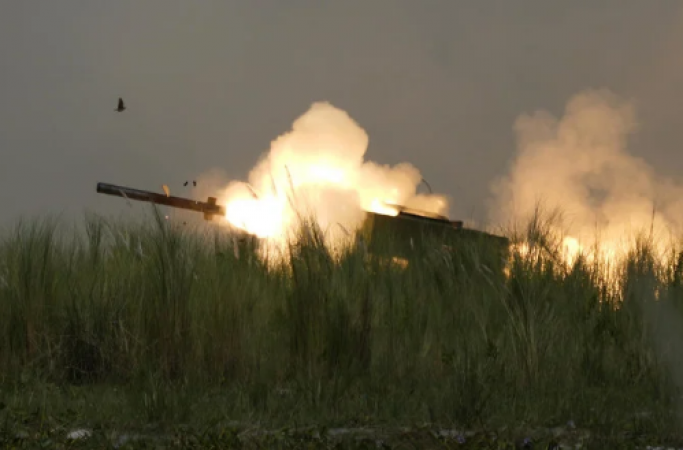
Philippines: In a combat exercise on Thursday, truck-mounted launchers fired rockets and US stealth fighter jets flew over the northern Philippines. It was the latest display of US shelling in an area where Washington has attempted to thwart China's escalating aggression.
Also Read: Putin "miscalculated" Russia's capacity to occupy Ukraine, according to Joe Biden
The highlight of the two-week combat readiness exercise, which included simulated amphibious assault and combined coastal defense tactics involving more than 2,500 American and Philippine marines, was a live-fire exercise at an artillery and bombardment range in a barren valley in the town of Kepas. was. Manila.
Howitzer artillery fire from US and Philippine sea fire positions, some of which were hidden by camouflage tents, sprung into a dusty valley surrounded by a mountain range and hills.
According to US military officials, the military exercise, which ended on Friday, was called Kamandag and was taking place at the same time as a combat exercise between US Marines and Japanese military forces on Japan's northern island of Hokkaido, in which both sides had About 3,000 military personnel were involved. Kamdag is Tagalog for "cooperation of the warriors of the sea".
The exercises, according to US Major General Jay Bargerone of the 3rd Marine Division stationed in Japan, were designed to strengthen the security of the US alliance with the Philippines and Japan and ensure that "we are ready to respond swiftly to the entire crisis". Ready for the Indo-Pacific."
According to US Marine Lieutenant Colonel Kurt Stahl, "This exercise is an important opportunity to bring together US and Philippine capabilities and personnel to strengthen our joint readiness, efficiency and trust."
The United States' HIMARS rocket launchers and F-35B supersonic fighter jets, which have recently assisted Ukraine in conflict with Russia, were on display during military exercises on Wednesday and Thursday.
Launchers for HIMARS fire GPS-guided missiles. According to Stahl, depending on the ammunition and system setup, HIMARS can reach targets up to 300 km away. Highly mobile launchers are difficult to detect by adversaries and can quickly reposition after firing to avoid retaliatory air strikes.
Also Read: Elon Musk disputes claims that he spoke with Vladimir Putin prior to his peace tweets
In addition to delivering a precise strike against critical targets such as a communications system or radar, HIMARS can be used to deter enemy forces from advancing "over a disputed piece of coastline," Stahl said.
Through a communication link, the F-35B jets can make a significant contribution to "raising battlefield awareness" among allied forces on the ground and in the air, as well as providing information about the locations of enemy forces, he said.
Stahl echoed comments made by Philippine military officials that the annual exercise was not intended to be used against any particular nation.
However, the war exercise came after Washington issued a stern warning to Beijing about its actions against Taiwan and other South China Sea claimant states.
China has reacted angrily to US Vice President Joe Biden's announcement that US forces would defend Taiwan if Beijing attempted to invade the autonomous island.
Under newly elected Philippine President Ferdinand Marcos Jr., who took office in June after a massive election victory, the military exercise was the first significant exercise between treaty allies.
Also Read:After Russia's bombing campaign Biden promises Ukraine to give advanced air defense systems
Rodrigo Duterte, who served as his predecessor, was a vocal opponent of US security strategies and promoted closer ties with China and Russia.
Early in his term as president, Duterte threatened to break ties with Washington and opposed military exercises involving US troops because he believed they could anger Beijing.
Later, Duterte attempted to cancel an important defense agreement that allowed several US forces to conduct combat drills in the Philippines, but he later backed down on his threat.